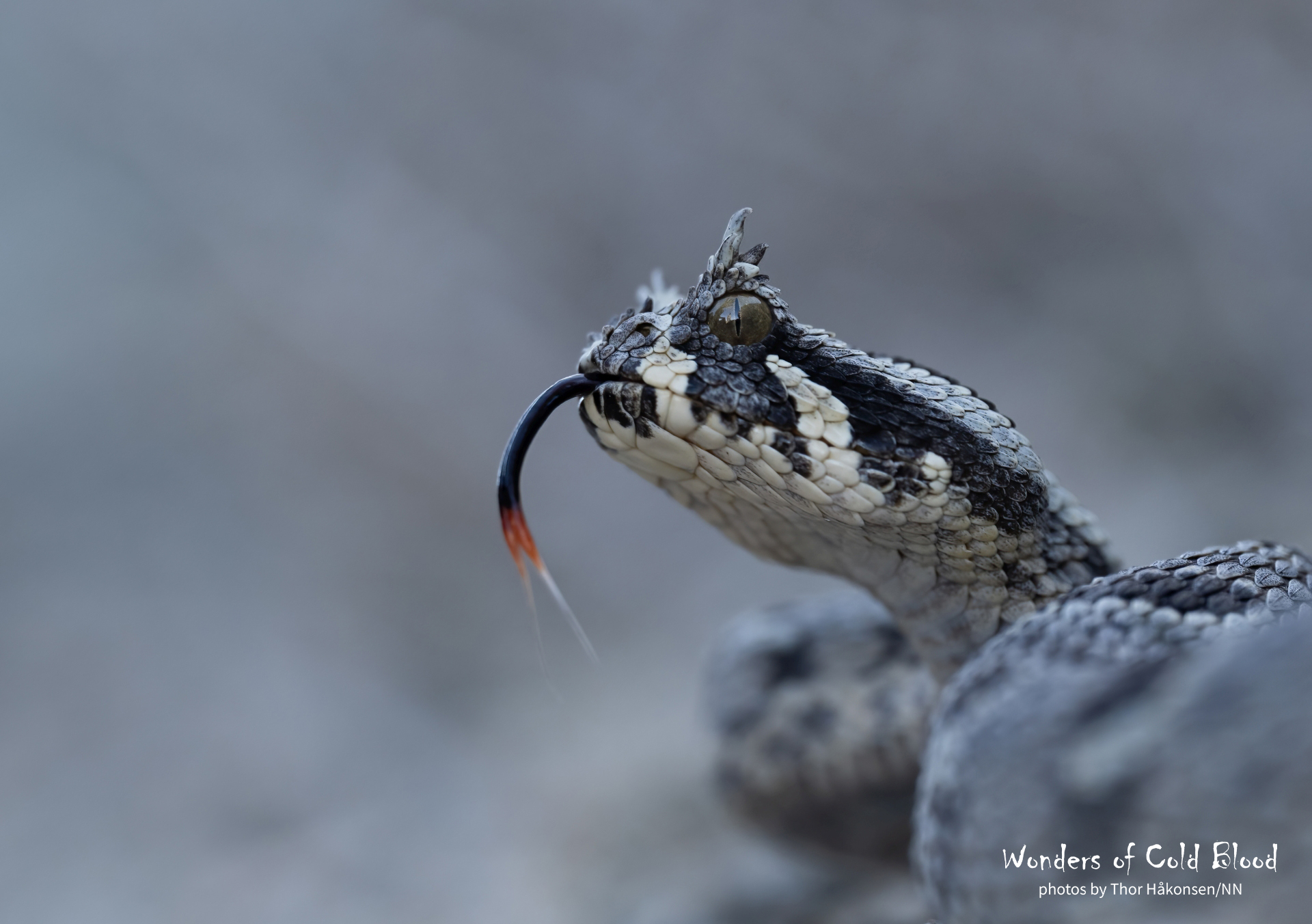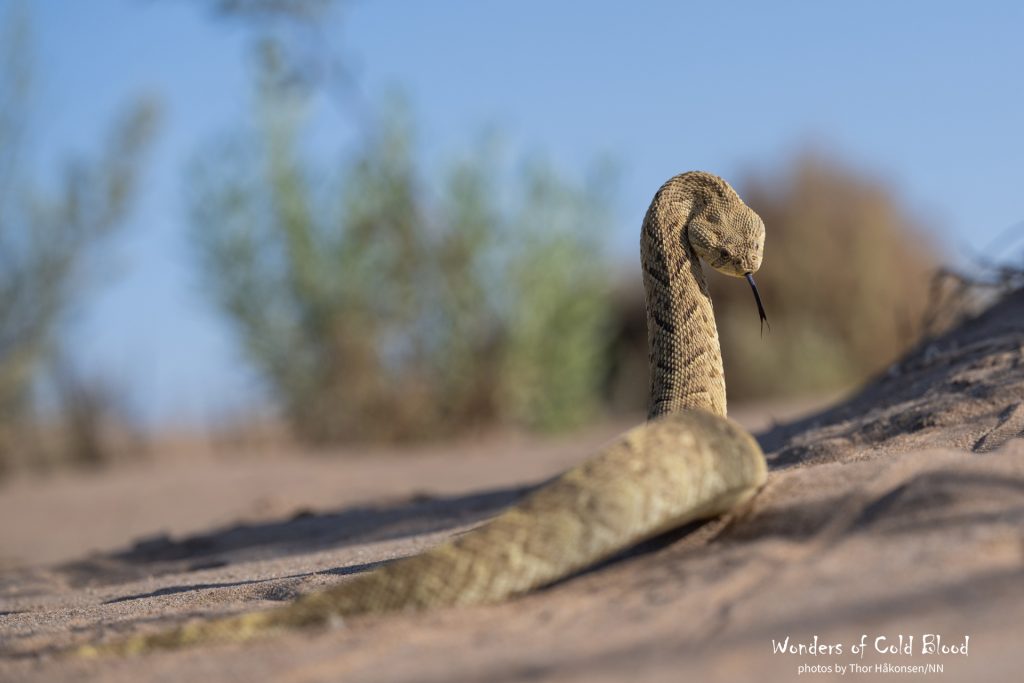10 years ago I was in Sweden and photographed captive Bitis cornuta and caudalis, and ever since that moment I’ve had a dream to see and photograph these species in the wild. And this year the dream finally was fullfilled!
Since my ordinary travelling company was occupied with other travels I invited some people to join me through my Facebook-page, and quickly Jonas Arvidsson (Sweden) and Alexander Pieh (Germany) was on the list, and some time later also Marisa Ai Ishimatsu and her husband Dacklin Young (USA) was on the list. Parallell to this I contacted Dayne Braine from The Naturalist Collection and we came up with a plan where the goal was to see all the Bitis species in the country;
- Puffadder (Bitis arietans)
- Horned adder (Bitis caudalis)
- Many-horned adder (Bitis cornuta)
- Peringuey’s adder (Bitis peringueyi)
- Namaqua dwarf adder (Bitis schneideri)
- Desert mountain adder (Bitis xeropaga)
Windhoek and surroundings
Me, Jonas and Alex arrived some days earlier than the americans, with a hope of getting acclimatised and finding a lot of animals before the trip with Dayne startet.. safe to say it did not go that way, but we still got to see some stuff. We were several days around Klein Windhoek, and the Avis dam + a ride further south looking for some drier areas.. Under you will see some of the scenery and animals we saw before we met up with Dayne and picked up the americans at the airport.


Keetmanshoop
After picking up Marisa and Dacklin at the airport, we drove directly down to Keetmanshoop – the main target in this area was the Desert Mountain adder (Bitis xeropaga).




Oranjemund
After Rosh Pinah we went further south, all the way south to the border of South Africa – the target here was the worlds smallest viper; Namaqua dwarf adder (Bitis schneideri)

Aus
Aus is a «connection point» which we visited on our way both south and north – and we did find some really nice species also here! The Namaqua chameleon is a truly spectacular species!

Luderitz
The main target for me was the many-horned adder (Bitis cornuta), and Luderitz should be THE place to find them, and man did this fantastic place come through for us, and in spectacular sceneries!

Sossusvlei
Sossusvlei is probably the best known place in Namibia, with its red sands and Deadvlei (the valley with the dead trees in the middle of the desert). This fantastic place is inhabited by one of the toughest and most specialized vipers on earth, the Peringuey’s adder (Bitis peringueyi).


Tropic of Capricorn
The team at the Tropic of Capricorn on our way north from Sossusvlei to Swakopmund.

Swakopmund
The final destination of our trip was Swakopmund, for our last species of the trip; the Puffadder (Bitis arietans), with the added bonus of more Peringuey’s adders
We also found several gecko species and more chameleons!
Bonus: Windhoek
On our way to the airport the last day, we decided to give it a go for the 7th species of Bitis in Namibia – this is a still undescribed species that we today call horned adder. But this will change in the near future.
Unfortunalty we struck out, but found a beautiful adult puffadder!
I would like to wrap this up with a huge thanks to our guide Dayne Braine from The Naturalist Collection. Do you plan a trip to Namibia for herping (or birding, or looking for the big mammals), Dayne is your man! Incredibly knowlegeable of more or less everything, easy going and helpful and a f***** master in tracking and finding snakes in the desert! 10 stars
Contact him on Facebook or here:
https://thenaturalistcollection.com/





















































































































